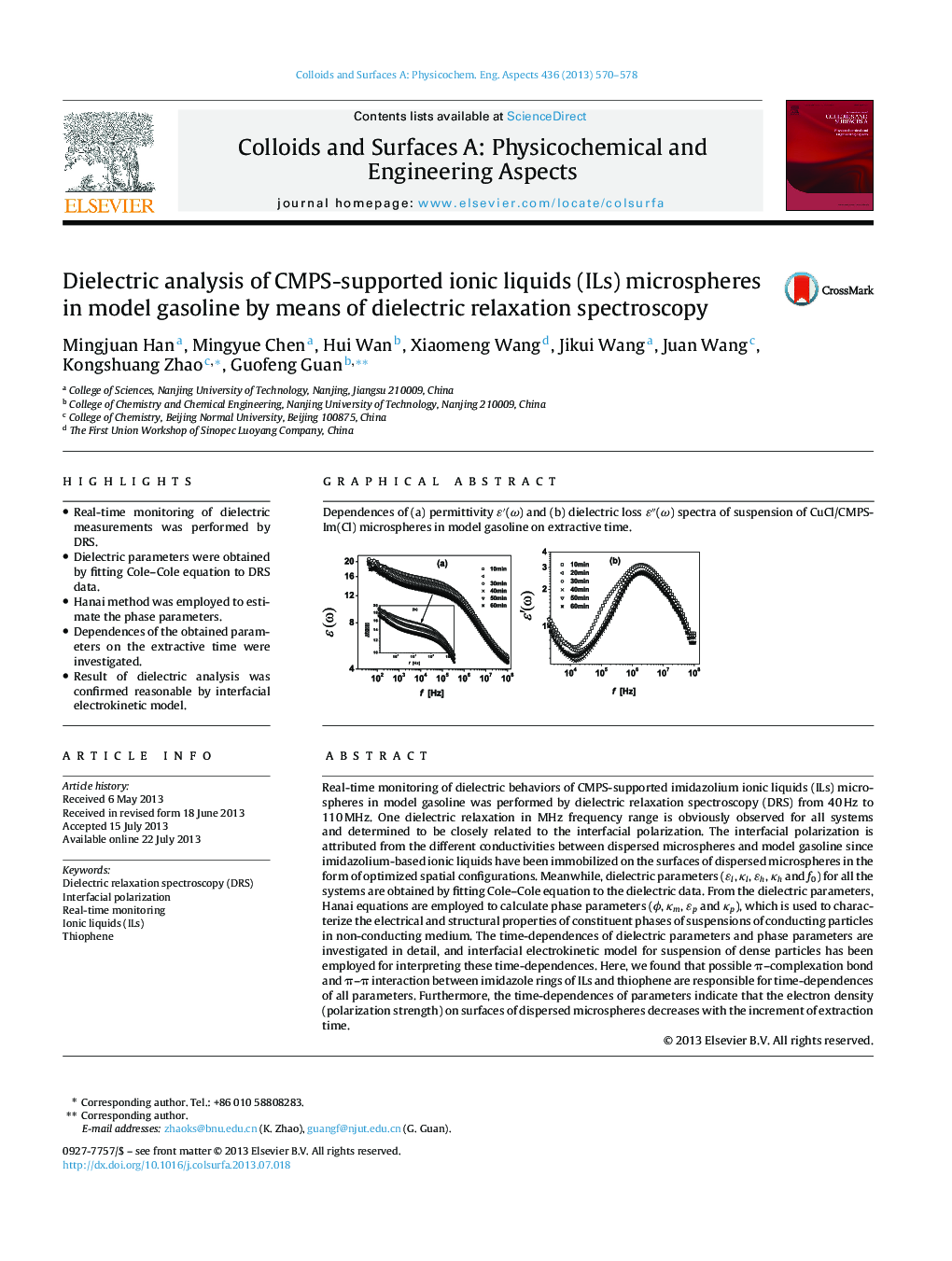| Article ID | Journal | Published Year | Pages | File Type |
|---|---|---|---|---|
| 593390 | Colloids and Surfaces A: Physicochemical and Engineering Aspects | 2013 | 9 Pages |
•Real-time monitoring of dielectric measurements was performed by DRS.•Dielectric parameters were obtained by fitting Cole–Cole equation to DRS data.•Hanai method was employed to estimate the phase parameters.•Dependences of the obtained parameters on the extractive time were investigated.•Result of dielectric analysis was confirmed reasonable by interfacial electrokinetic model.
Real-time monitoring of dielectric behaviors of CMPS-supported imidazolium ionic liquids (ILs) microspheres in model gasoline was performed by dielectric relaxation spectroscopy (DRS) from 40 Hz to 110 MHz. One dielectric relaxation in MHz frequency range is obviously observed for all systems and determined to be closely related to the interfacial polarization. The interfacial polarization is attributed from the different conductivities between dispersed microspheres and model gasoline since imidazolium-based ionic liquids have been immobilized on the surfaces of dispersed microspheres in the form of optimized spatial configurations. Meanwhile, dielectric parameters (ɛl, κl, ɛh, κh and f0) for all the systems are obtained by fitting Cole–Cole equation to the dielectric data. From the dielectric parameters, Hanai equations are employed to calculate phase parameters (ϕ, κm, ɛp and κp), which is used to characterize the electrical and structural properties of constituent phases of suspensions of conducting particles in non-conducting medium. The time-dependences of dielectric parameters and phase parameters are investigated in detail, and interfacial electrokinetic model for suspension of dense particles has been employed for interpreting these time-dependences. Here, we found that possible π–complexation bond and π–π interaction between imidazole rings of ILs and thiophene are responsible for time-dependences of all parameters. Furthermore, the time-dependences of parameters indicate that the electron density (polarization strength) on surfaces of dispersed microspheres decreases with the increment of extraction time.
Graphical abstractDependences of (a) permittivity ɛ′(ω) and (b) dielectric loss ɛ″(ω) spectra of suspension of CuCl/CMPS-Im(Cl) microspheres in model gasoline on extractive time.Figure optionsDownload full-size imageDownload as PowerPoint slide
